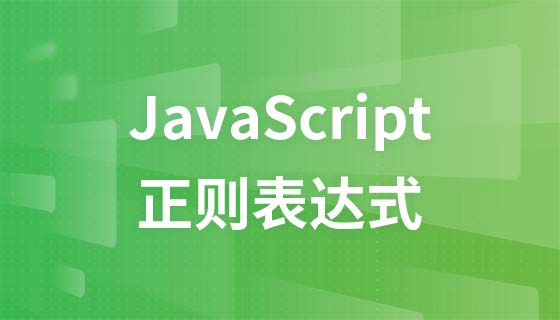函数退出后,go例程如何从调用函数中访问局部变量?
来源:stackoverflow
时间:2024-03-17 08:24:27 344浏览 收藏
在 Go 语言中,局部变量通常在函数退出后就无法访问。但是,当变量在函数内部被 goroutine 使用时,编译器会通过“逃逸分析”将变量分配到堆上,从而使变量在函数退出后仍然可用。这使得 goroutine 可以继续访问和更新变量,即使函数已经退出。
对 golang 来说相当陌生。我对 go 的变量范围有点困惑。我有以下玩具程序
package main
import "sync"
import "time"
import "fmt"
import "math/rand"
func main() {
go main_helper()
time.sleep(time.duration(1000000) * time.millisecond)
}
func main_helper() {
rand.seed(time.now().unixnano())
count := 0
finished := 0
var mu sync.mutex
cond := sync.newcond(&mu)
for i := 0; i < 10; i++ {
go func(i int) {
vote := requestvote(i)
mu.lock()
defer mu.unlock()
if vote {
count++
}
fmt.printf("cur_count: %d\n", count)
finished++
cond.broadcast()
}(i)
}
mu.lock()
for count < 5 {
cond.wait()
}
if count >= 5 {
println("received 5+ votes!")
} else {
println("lost")
}
mu.unlock()
fmt.printf("exited main loop\n")
}
func requestvote(i int) bool {
if i > 6 {
time.sleep(time.duration(1000) * time.millisecond)
} else {
time.sleep(time.duration(rand.intn(100)) * time.millisecond)
}
fmt.printf("go routine: %d requested vote\n", i)
return true
}
在 go 演示中运行此示例时,我得到以下输出:
go routine: 0 requested vote cur_count: 1 go routine: 6 requested vote cur_count: 2 go routine: 1 requested vote cur_count: 3 go routine: 4 requested vote cur_count: 4 go routine: 2 requested vote cur_count: 5 received 5+ votes! Exited main loop go routine: 3 requested vote cur_count: 6 go routine: 5 requested vote cur_count: 7 go routine: 7 requested vote cur_count: 8 go routine: 8 requested vote cur_count: 9 go routine: 9 requested vote cur_count: 10
这就提出了一个问题,当 main_helper() 退出时,为什么像 count 和 mu 这样的局部变量不会超出范围?为什么我们仍然看到未完成的 go 例程正确更新计数变量?
解决方案
这是“逃逸分析”的结果。编译器意识到变量 count 对函数 main_helper 进行转义,因为它在 goroutine 中使用,因此该变量分配在堆上而不是堆栈上。一般来说,您可以返回指向局部变量的指针,并且由于转义分析,编译器会在堆上分配该变量,例如:
type x struct {
...
}
func newx() *x {
return &x{}
}
这是一种常见的类似构造函数的模式来初始化结构。此代码相当于:
func newx() *x {
return new(x)
}
在您的程序中,count:=0 声明相当于:
count:=new(int) *count=0
并且 goroutine 保留一个指向 count 的指针。 finished 相同。
任何符合 go 语言规范的编译器都可以使用其作者选择实现的任何技术,例如将所有变量放在堆上,根本不释放内存,使用引用计数或仅将一些变量放在堆栈上。
文中关于的知识介绍,希望对你的学习有所帮助!若是受益匪浅,那就动动鼠标收藏这篇《函数退出后,go例程如何从调用函数中访问局部变量?》文章吧,也可关注golang学习网公众号了解相关技术文章。
-
502 收藏
-
502 收藏
-
501 收藏
-
501 收藏
-
501 收藏
-
139 收藏
-
204 收藏
-
325 收藏
-
478 收藏
-
486 收藏
-
439 收藏
-
357 收藏
-
352 收藏
-
101 收藏
-
440 收藏
-
212 收藏
-
143 收藏
-

- 前端进阶之JavaScript设计模式
- 设计模式是开发人员在软件开发过程中面临一般问题时的解决方案,代表了最佳的实践。本课程的主打内容包括JS常见设计模式以及具体应用场景,打造一站式知识长龙服务,适合有JS基础的同学学习。
- 立即学习 543次学习
-

- GO语言核心编程课程
- 本课程采用真实案例,全面具体可落地,从理论到实践,一步一步将GO核心编程技术、编程思想、底层实现融会贯通,使学习者贴近时代脉搏,做IT互联网时代的弄潮儿。
- 立即学习 516次学习
-

- 简单聊聊mysql8与网络通信
- 如有问题加微信:Le-studyg;在课程中,我们将首先介绍MySQL8的新特性,包括性能优化、安全增强、新数据类型等,帮助学生快速熟悉MySQL8的最新功能。接着,我们将深入解析MySQL的网络通信机制,包括协议、连接管理、数据传输等,让
- 立即学习 500次学习
-

- JavaScript正则表达式基础与实战
- 在任何一门编程语言中,正则表达式,都是一项重要的知识,它提供了高效的字符串匹配与捕获机制,可以极大的简化程序设计。
- 立即学习 487次学习
-

- 从零制作响应式网站—Grid布局
- 本系列教程将展示从零制作一个假想的网络科技公司官网,分为导航,轮播,关于我们,成功案例,服务流程,团队介绍,数据部分,公司动态,底部信息等内容区块。网站整体采用CSSGrid布局,支持响应式,有流畅过渡和展现动画。
- 立即学习 485次学习
